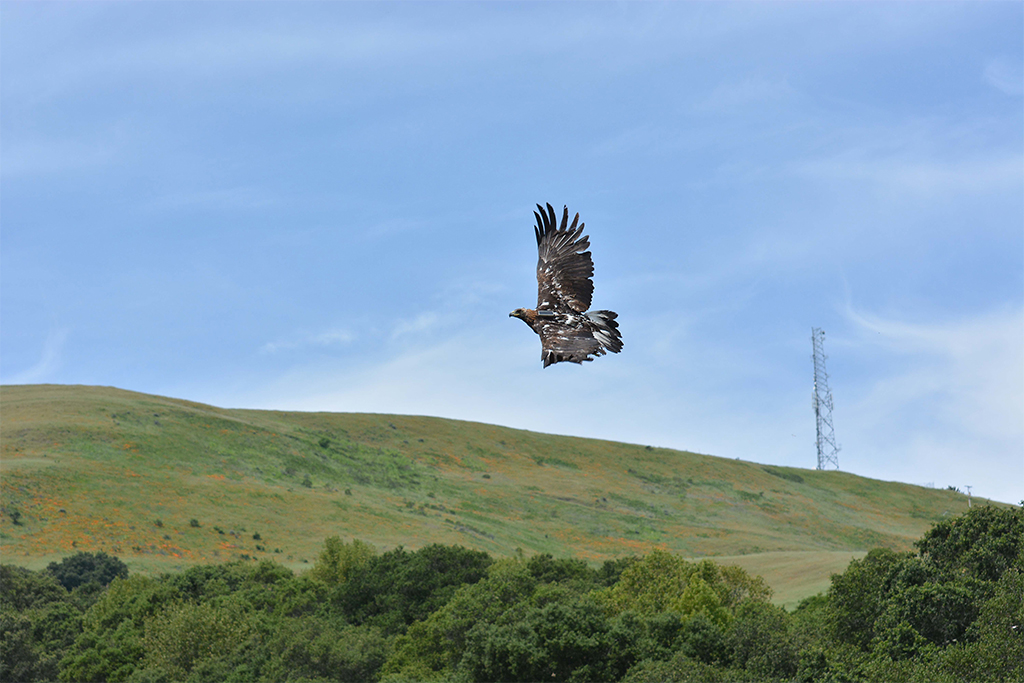Recovered Golden Eagle Returns to the Wild
May 2
One of California’s most majestic birds of prey will return to the wild today after eight months of treatment and rehabilitation at the UC Davis California Raptor Center. The young female golden eagle was discovered and photographed last summer in the Altamont Pass Wind Resource Area by K. Shawn Smallwood, an independent researcher, who alerted Doug Bell, an East Bay Regional Park wildlife biologist. The two scientists began following her movements and noted that she was in very poor physical condition, with missing feathers and obvious patches of crusty bare skin. A team of eagle experts was assembled and a decision was reached to trap her.
Click for more information
After capturing the bird, Bell and his colleagues transferred her to the UC Davis School of Veterinary Medicine where she was evaluated and treated at the William R. Pritchard Veterinary Medical Teaching Hospital for major infestation of mites that left her covered by severe lesions and without feathers on her head, belly and legs.
“This was a rare case and the degree to which this bird was affected must have been quite painful,” said Michelle Hawkins, director of the California Raptor Center. “The mites caused severe lesions and crust, up to an inch thick in places, as part of the inflammatory process.”
When a bird’s legs and mouth are affected, Hawkins explained, it becomes painful to capture their prey and eat. Loss of feathers leaves a bird vulnerable to hypothermia and impacts flying ability. Several months of treatment with ivermectin and selamectin cleared the mite infestation, but the golden eagle still needed to regrow her feathers before release so she overwintered at the raptor center.
The California Department of Fish and Wildlife (CDFW) have documented two additional mite-infested golden eagles in California during the past year in Monterey and San Benito counties. This female is the only one to survive and make a recovery, according to CDFW Environmental Scientist Krysta Rogers. The first two golden eagles were admitted to the S.P.C.A. for Monterey County, but did not survive. The necropsy was performed at the California Animal Health and Food Safety Laboratory at UC Davis in collaboration with CDFW to help determine cause of death and the type of mite involved in both cases.
The particular mite affecting the eagle was identified by UC Davis epidemiologists Janet Foley and Nicole Stephenson as most closely resembling Knemidokoptes derooi. These mites have never been documented in raptors or from birds in North America. K. derooi was published once before in a small palm swift in the 1970s in Africa.
“This was a collaborative agency effort to save this golden eagle and possibly others, which are paramount to California’s sensitive ecosystem,” Rogers said. “We are very hopeful this infestation is just one of a few isolated cases.”
The golden eagle will be released at Las Trampas Regional Wilderness, a regional park located in Alameda and Contra Costa counties and part of the East Bay Regional Park District. This location was chosen because it is close to, but not within the Altamont Pass Wind Resource Area, a region where risk of injury to the eagle from wind turbine blade strikes remains high. A member of Bell’s team, Brian Latta, will outfit the bird with a small backpack GPS transmitter with solar recharging. They record locations every 15 minutes during daylight hours and download the GPS data to cell towers. The transmitter harness is sewn with decomposable thread, so the backpack transmitter will eventually fall off of the eagle.
“We’re hopeful that the tracking data from this eagle will contribute to our understanding of how golden eagles use this region, including the Altamont Pass Wind Resource Area, which represents a threat to the local population through wind turbine strikes,” Bell said. “Along with genetic analysis from blood work, we may gain more insight about the home ranges of golden eagles in this part of California. The East Bay Regional Park District is very interested in providing habitat and conditions that will ultimately assure a self-sustaining population of golden eagles for future generations.”
While state wildlife officials are hopeful that these few cases of mites in golden eagles are rare events, in the event that the public should come across an infected bird, they should immediately contact their local California Department of Fish and Wildlife. A list of regional offices with contact information can be found at: http://www.dfg.ca.gov/regions/.
“We’re thrilled to see how far this beautiful golden eagle has come in her recovery process,” Hawkins said. “Her success is a real testament to the collaborative effort of multiple agencies and people.”
For a chance to see a golden eagle up close, visit the California Raptor Center’s Spring Open House on Saturday, May 3rd. Visitors will have a chance to meet Sullivan, the center’s resident golden eagle, as well as many other birds of prey. For more info, click here.
Where: Las Trampas Regional Wilderness—Take the Crow Canyon Road exit off highway 680 in San Ramon, head west a couple miles to Bollinger Canyon Road, turn right onto Bollinger Canyon Road and continue to where it dead-ends in the staging area parking lot.
When: Friday, May 2, at 10 a.m.
Media Contacts:
Emily Hopkins, Public Affairs, East Bay Regional Park District
Office 510-544-2217; Mobile 510-432-6894
Trina Wood, Communications, UC Davis School of Veterinary Medicine
Office 530-752-5257; Mobile 530-400-3197
Janice Mackey, Information Officer, California Department of Fish and Wildlife
Office 916-322-8908
Press release images available to download
This image of the golden eagle was taken by K. Shawn Smallwood, independent researcher, when he first saw her last July in the Altamont Pass Wind Resource Area.
Photo credit: K. Shawn Smallwood
Click here to download hi-rez image
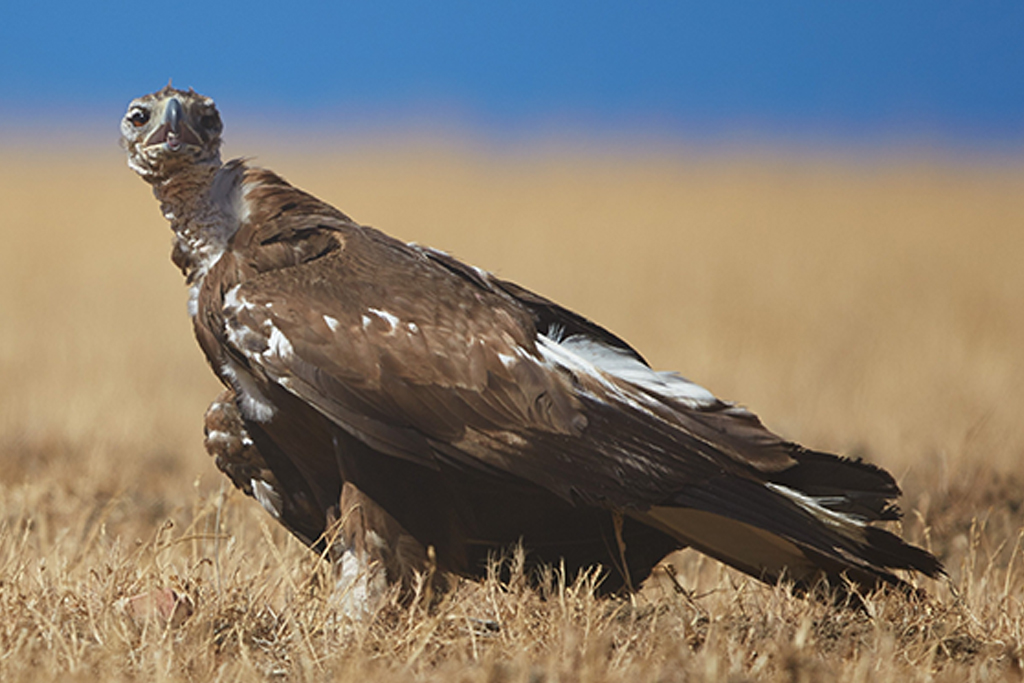
This image of the golden eagle was taken by K. Shawn Smallwood, independent researcher, when he first saw her last July in the Altamont Pass Wind Resource Area.
Photo credit: K. Shawn Smallwood
Click here to download hi-rez image
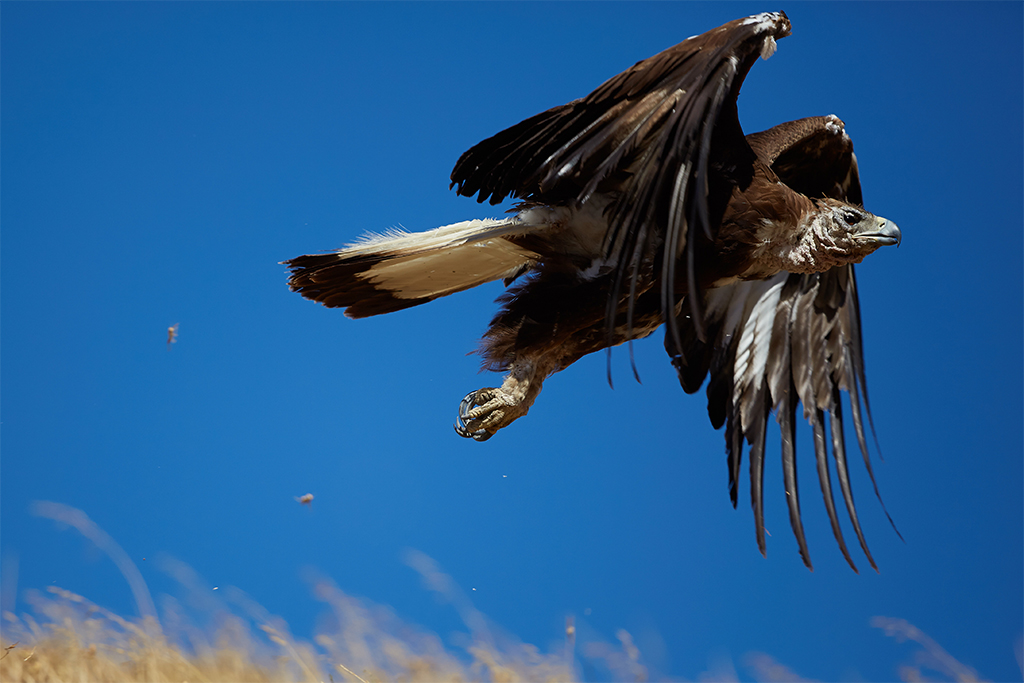
Brian Latta, a consulting eagle biologist through the American Eagle Research Institute, with the golden eagle immediately after capture on August 8, 2013.
Photo Credit: East Bay Regional Park District
Click here to download hi-rez image
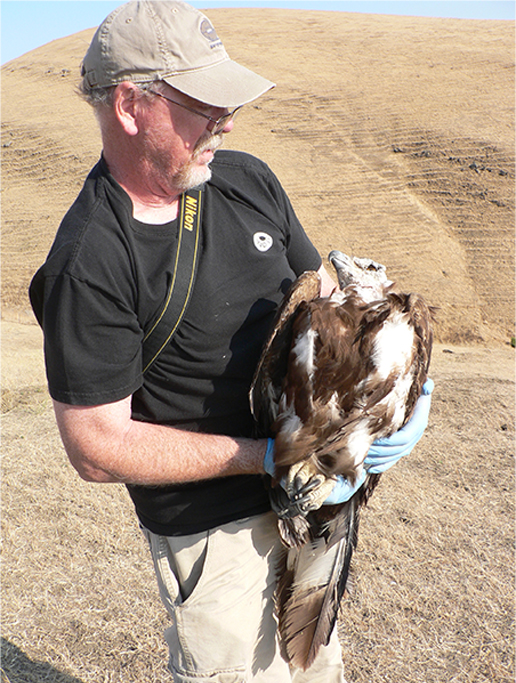
The golden eagle’s head was encrusted with a mite infestation upon examination at the UC Davis William R. Pritchard Veterinary Medical Teaching Hospital.
Photo Credit: UC Davis School of Veterinary Medicine
Click here to download hi-rez image
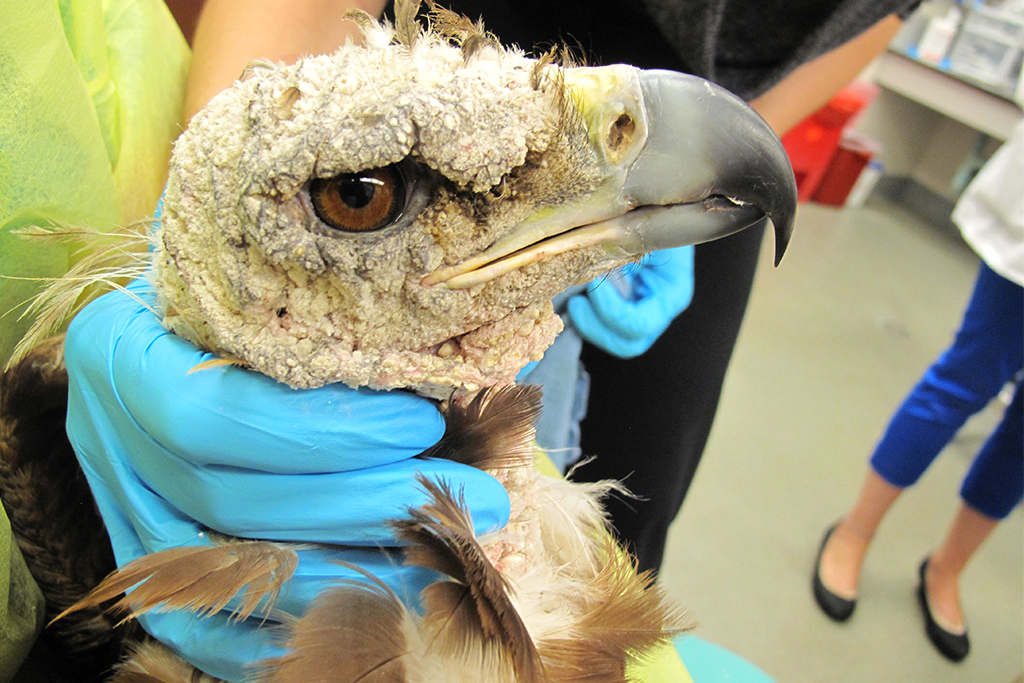
After a couple months of treatment, feathers start to return to the young eagle’s head.
Photo Credit: UC Davis School of Veterinary Medicine
Click here to download hi-rez image
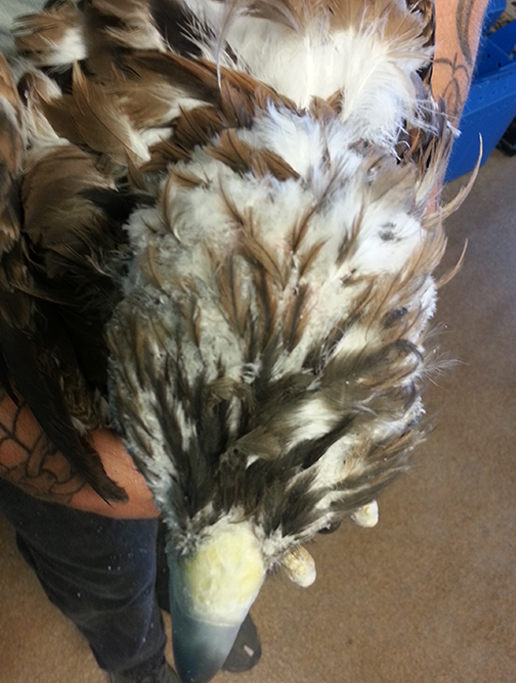
After a couple months of treatment, feathers start to return to the young eagle’s head.
Photo Credit: UC Davis School of Veterinary Medicine
Click here to download hi-rez image
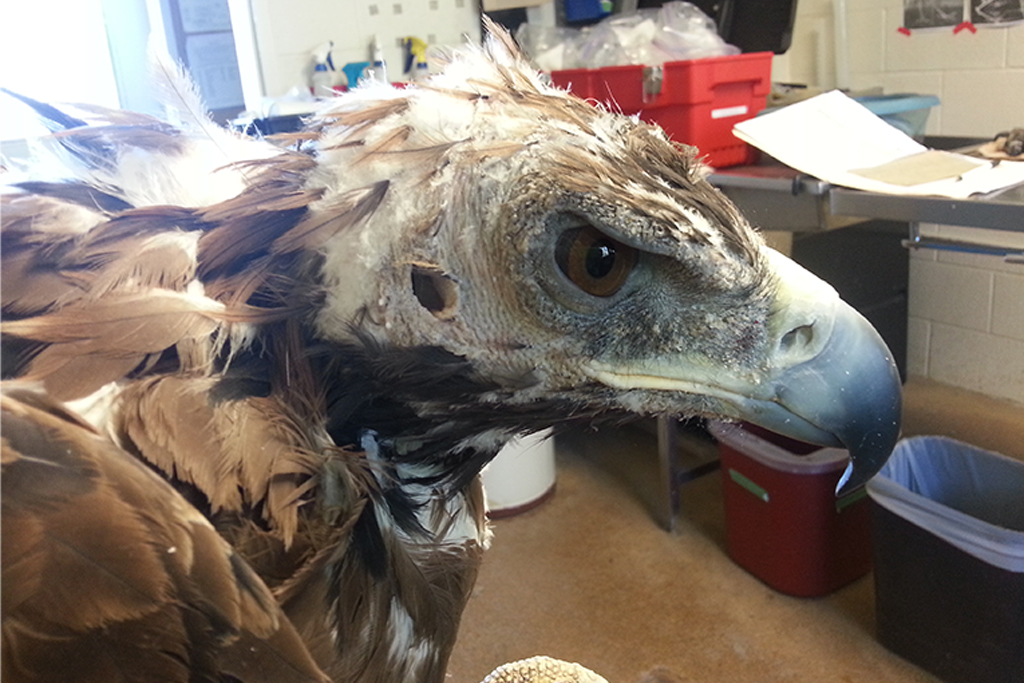
After a couple months of treatment, feathers start to return to the young eagle’s head.
Photo Credit: UC Davis School of Veterinary Medicine
Click here to download hi-rez image

The golden eagle continues to regain feathers last November during treatment at the UC Davis William R. Pritchard Veterinary Medical Teaching Hospital.
Photo Credit: UC Davis School of Veterinary Medicine
Click here to download hi-rez image
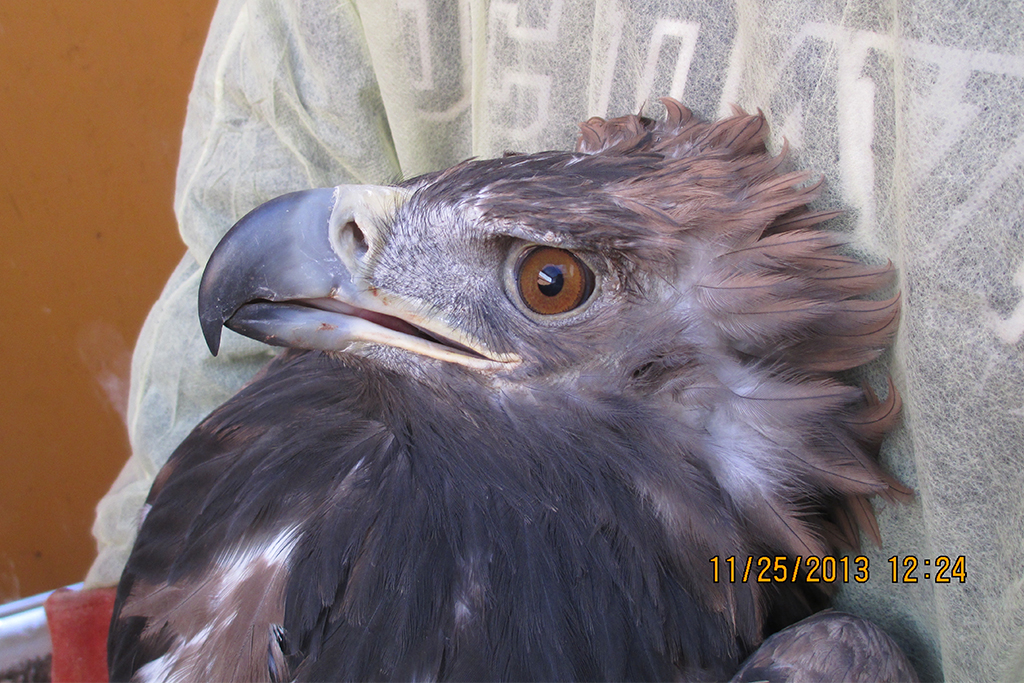
The golden eagle continues to regain feathers last November during treatment at the UC Davis William R. Pritchard Veterinary Medical Teaching Hospital.
Photo Credit: UC Davis School of Veterinary Medicine
Click here to download hi-rez image
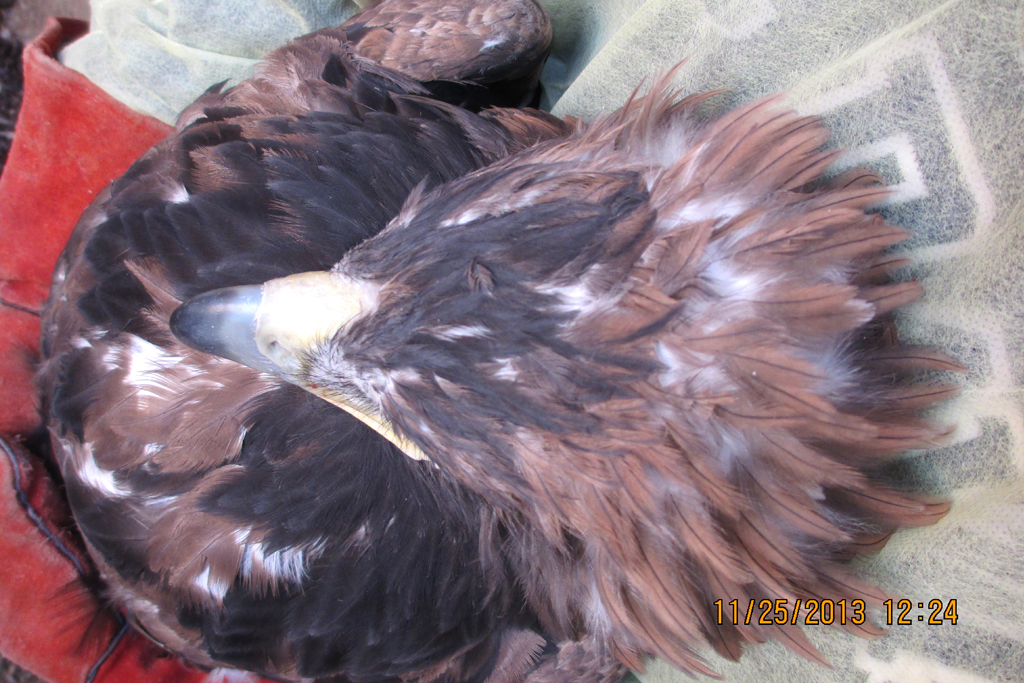
Brenton Pierce, a volunteer at the UC Davis California Raptor Center, prepares the golden eagle for a flight-line test a few days before her release.
Photo Credit: UC Davis School of Veterinary Medicine
Click here to download hi-rez image

Brenton Pierce, a volunteer at the UC Davis California Raptor Center, prepares the golden eagle for a flight-line test a few days before her release.
Photo Credit: UC Davis School of Veterinary Medicine
Click here to download hi-rez image
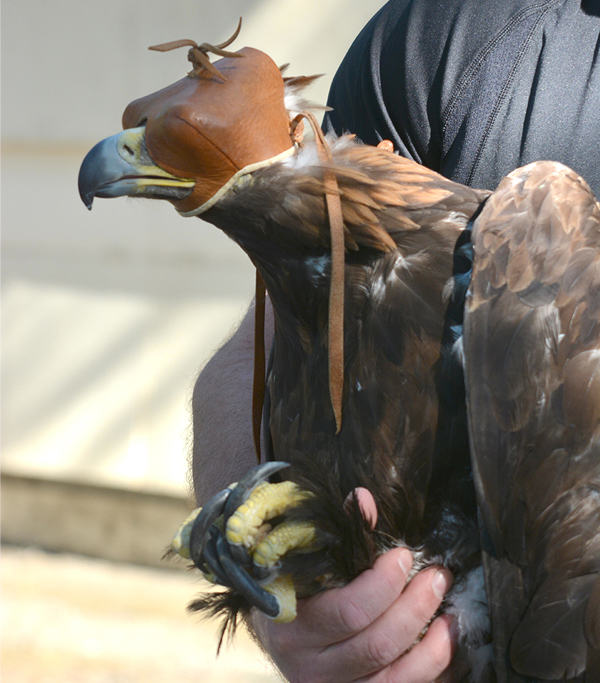
On left, Randy Couch and Brenton Pierce, both volunteers with the UC Davis California Raptor Center prepare the golden eagle for a flight line test with the help of Bret Stedman, manager of the raptor center.
Photo Credit: UC Davis School of Veterinary Medicine
Click here to download hi-rez image
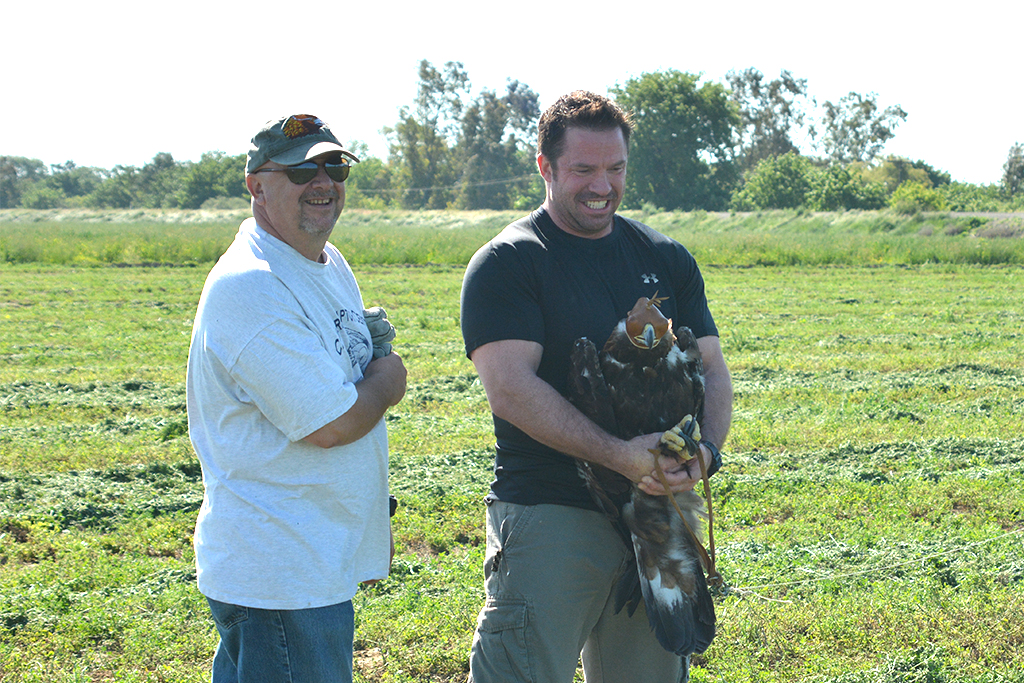
The young golden eagle has demonstrated that she is ready to return to the wild.
Photo Credit: UC Davis School of Veterinary Medicine
Click here to download hi-rez image
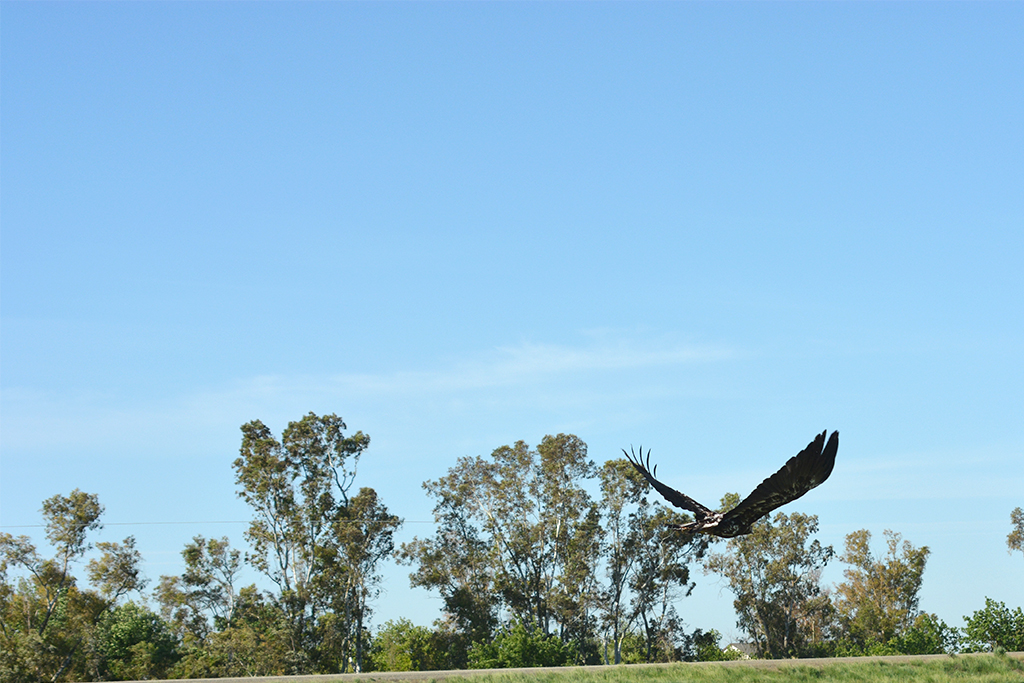
The young golden eagle has demonstrated that she is ready to return to the wild.
Photo Credit: UC Davis School of Veterinary Medicine
Click here to download hi-rez image
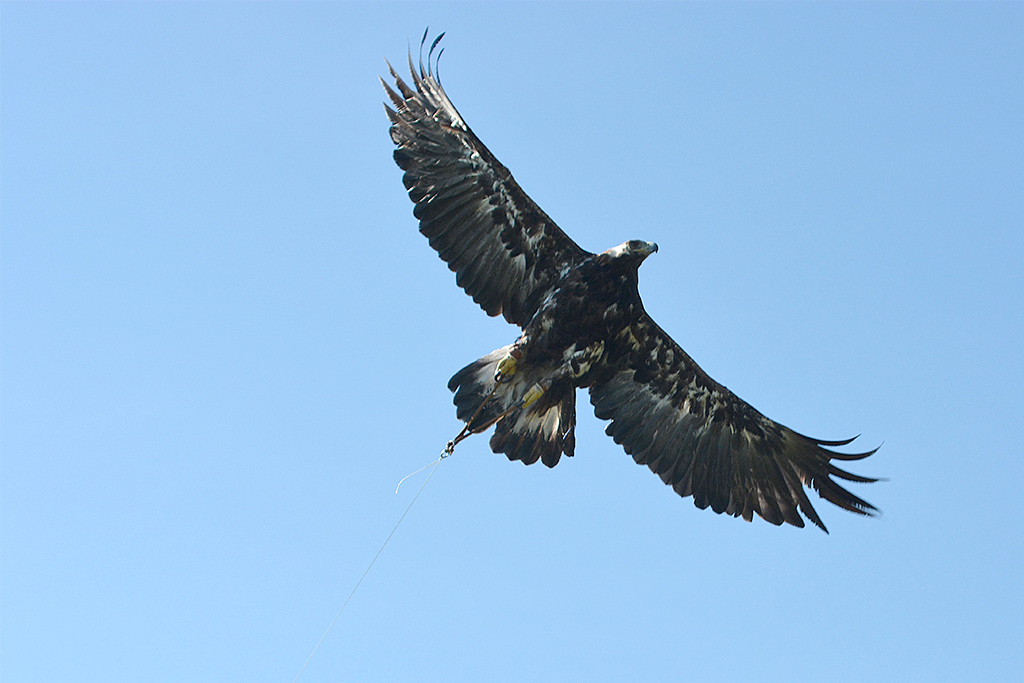
Recovered golden eagle takes to the skies after eight months of treatment and rehabilitation at the California Raptor Center, UC Davis School of Veterinary Medicine.
Photo Credit: UC Davis School of Veterinary Medicine
Click here to download hi-rez image
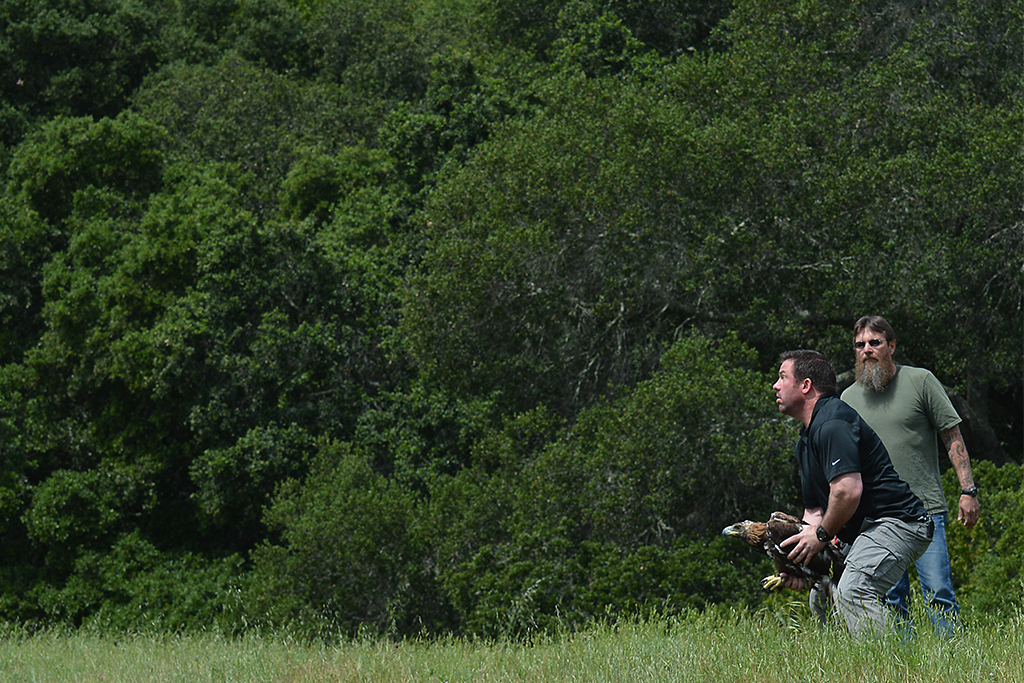
Recovered golden eagle takes to the skies after eight months of treatment and rehabilitation at the California Raptor Center, UC Davis School of Veterinary Medicine.
Photo Credit: UC Davis School of Veterinary Medicine
Click here to download hi-rez image
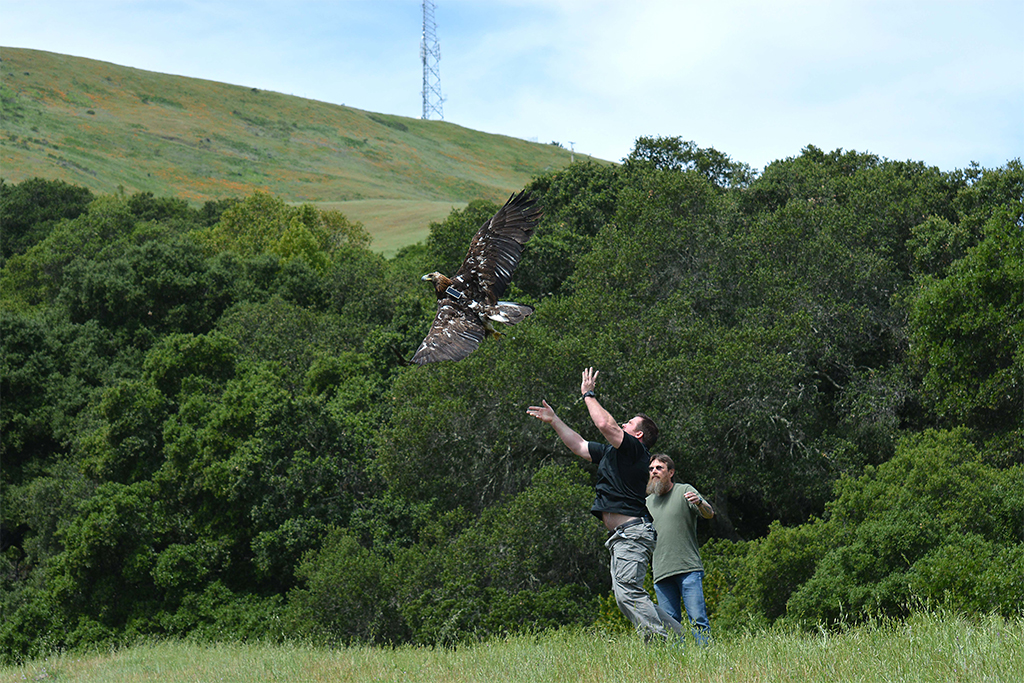
Recovered golden eagle takes to the skies after eight months of treatment and rehabilitation at the California Raptor Center, UC Davis School of Veterinary Medicine.
Photo Credit: UC Davis School of Veterinary Medicine
Click here to download hi-rez image
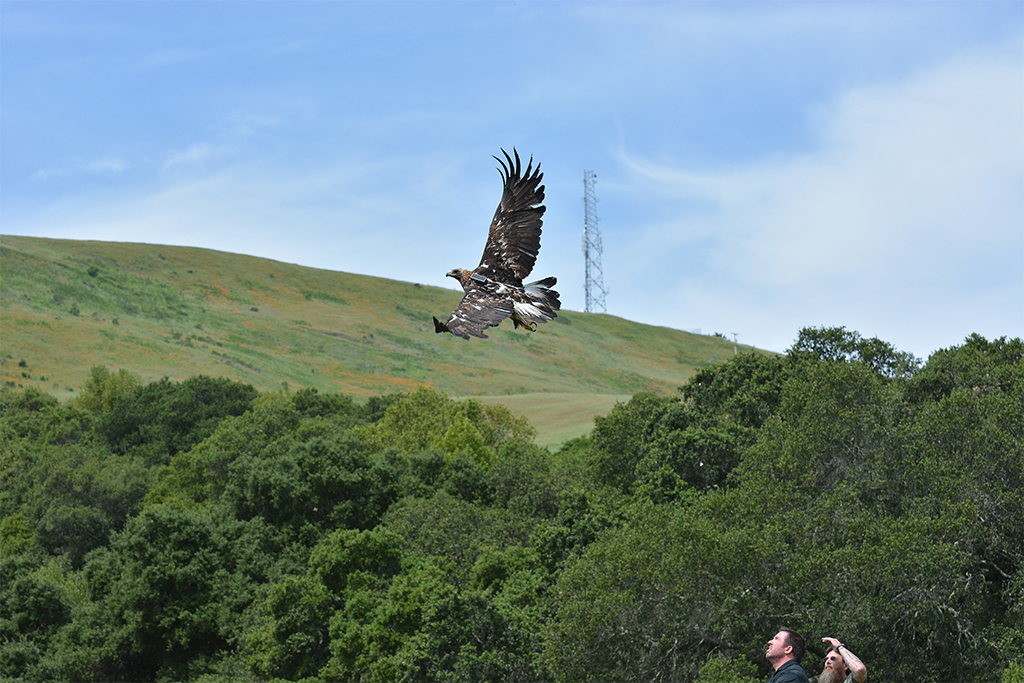
Recovered golden eagle takes to the skies after eight months of treatment and rehabilitation at the California Raptor Center, UC Davis School of Veterinary Medicine.
Photo Credit: UC Davis School of Veterinary Medicine
Click here to download hi-rez image
